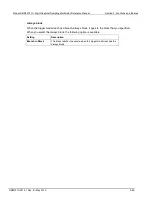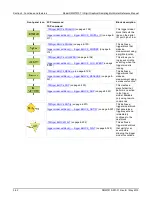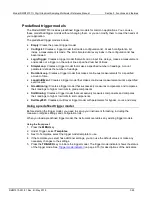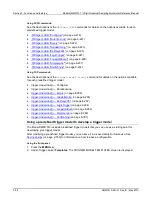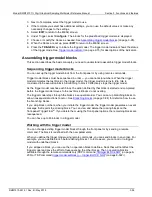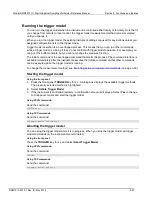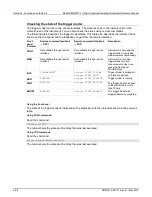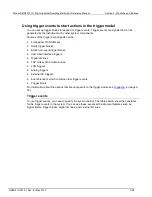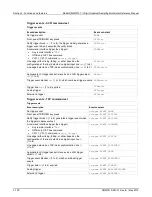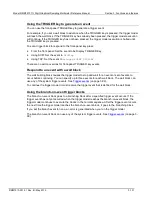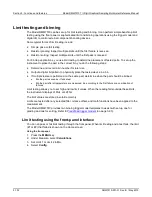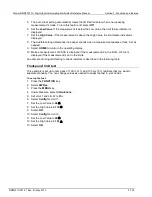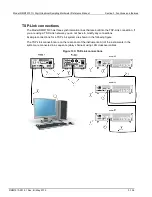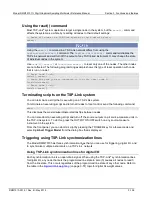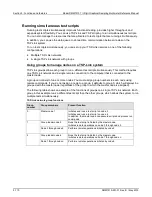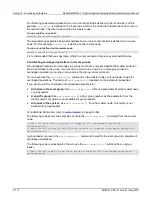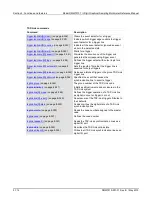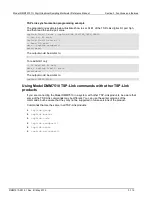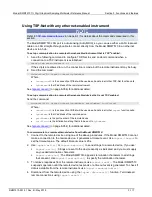
Section 3: Functions and features
Model DMM7510 7½ Digit Graphical Sampling Multimeter Reference Manual
3-102
DMM7510-901-01 Rev. B / May 2015
Limit testing and binning
The Model DMM7510 can be set up for limit testing and binning. It can perform simple benchtop limit
testing using the front panel or sophisticated limit and binning operations using the trigger model and
digital I/O to control external component-handling devices.
Some typical forms of limit testing include:
•
Simple pass-or-fail testing
•
Resistor grading: Inspect multiple limits until the first failure is received
•
Resistor sorting: Inspect multiple limits until the first pass is received
For binning applications, you use limit testing to determine placement of tested parts. To set up the
instrument to place the part in the correct bin, you do the following steps:
•
Determine and record a bin number for later use
•
Output a digital bit pattern to physically place the tested device in a bin
•
If multiple tests are performed on the same part, determine when the part should be binned:
•
Bin the part as soon as it fails a test
•
Bin the part after all parameters are measured; bin according to the first failure or a combination of
failures
Limit testing allows you to set high and low limit values. When the reading falls outside these limits,
the instrument displays L1FAIL or L2FAIL.
The limit values are stored in volatile memory.
Limits are tested after any selected filter, relative offset, and math functions have been applied to the
measurement.
The Model DMM7510 provides two binning trigger model templates to assist with setup, one for
grading and one for sorting. Refer to
(on page 3-93).
Limit testing using the front-panel interface
You can do pass or fail limit testing through the front panel. When limit testing and a test fails, the limit
(#1 or #2) that failed is shown on the Home screen.
Using the front panel:
1. Press the
MENU
key.
2. Under Measure, select
Calculations
.
3. Set Limit 1 or Limit 2 to
On
.
4. Select
Config
.


